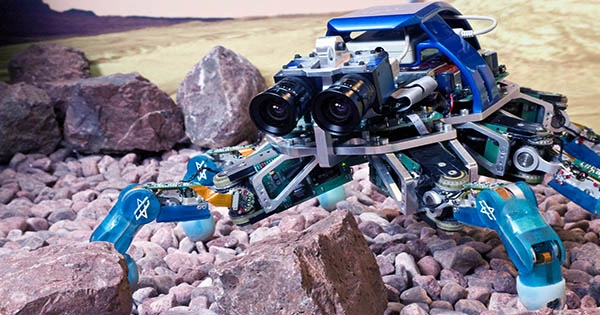Frequent travelers, rejoice: a team of Swiss researchers has created a folding flat robot that can rotate into practically any shape imaginable and fits perfectly under any airplane seat or overhead cabin. According to a recent Futurism article, the robot, whose design was influenced by the aesthetic flare of Japanese origami, can pack itself totally flat like a piece of Ikea furniture. With other recent advances in science and robotics leading to astounding innovations, such as liquid robots that can phase through metal bars like a T-1000, as well as a slew of robotic enhancements provided by Boston Dynamics, many people are beginning to worry that science has gone too far.
The flat robot was created by a roboticist team from Switzerland’s Ecole Polytechnique Fédérale de Lausanne with the goal of assisting astronauts on board spaceships. Because of the tight surroundings aboard most satellites and space stations, the robots called the Mori3, will undoubtedly be of great use to orbiting space cadets. The Mori3 can fold itself flat enough to conveniently stow away in confined locations, and it can also bend into a circular shape to fast-traverse any ground like a tire, as demonstrated in a YouTube video displaying the cyborg’s remarkable folding skills.

The dexterous bots can fold and twist into various shapes by using four flattened limbs coupled with a system of electrically powered ball joints and hinges that allow for a wide range of movement. After studying the carefully folded triangular corners present in many origami sculptures, the Swiss scientists evidently concluded that they could re-invent the wheel, which supported the vision that the flat robot could reconfigure its shape by utilizing the unusual polygonal structure of its ergonomic design.
The flat robot, according to project director Jamie Paik, may also be readily disassembled and reassembled to assist with certain activities, acting as a robotic LEGO set aboard the International Space Station or other comparable situations. Paik and his team were compelled to entirely rethink their approach to bot development in order to avoid frequent errors that occur when scientists seek to design humanoid robots with lanky limbs that get in the way.
The Mori3’s greatest strength, according to Paik, is its versatility, though it may not be as useful in highly specialized environments as the competition, such as Boston Dynamics’ Spot, Stretch, and Scout robots, which are frequently highlighted in YouTube videos, sometimes performing complex dance moves in a pure flex of the engineering team’s incredible capabilities. Despite these products’ highly complex movement sets, the flat robot may still be preferred in some circumstances due to its modest storage requirements.
The rise of inventions such as the flat robot and artificial intelligence programs such as ChatGPT and the Dall-E Mini image processor has led many members of the general public to wonder whether robots would eventually replace many positions in the general labor force. Of course, as Jamie Paik and his team have stated, these innovations have been implemented to assist engineers and the general public, rather than to replace them. Though the technology may appear frightening, you can rely on Giant Freakin Robot for future updates of this nature.
















